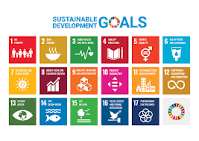FADING LANGUAGES OF NEPAL: WHY LINGUISTIC DIVERSITY NEEDS PROTECTION
Nepal, despite its relatively small
geographic size, is one of the most linguistically diverse countries in the
world. According to the 2021 National Census, the country is home to 123 spoken
languages, most of which belong to the Indo-Aryan, Tibeto-Burman, Dravidian,
and Austroasiatic language families (Central Bureau of Statistics, 2021). This
rich linguistic tapestry, however, is under severe threat. Many of these
languages are endangered, with some spoken by only a few hundred or even fewer
individuals. While Nepal’s linguistic diversity is a testament to its cultural
richness and pluralistic heritage, it also reveals deep structural inequalities
and a historical legacy of marginalization. This makes the preservation of
Nepal’s linguistic diversity not just a cultural concern but a socio-political
and ethical imperative.
The decline of indigenous and minority
languages in Nepal is closely tied to state policies that have historically
favored linguistic homogeneity. For much of the 20th century, Nepali—the
language of the dominant Khas-Arya group—was promoted as the sole language of
national unity and official communication. During the Panchayat regime
(1960–1990), the imposition of “one language, one nation” became state
doctrine, leading to the suppression of local languages in education,
governance, and media (Gurung, 2009). Indigenous and minority languages were
largely excluded from the curriculum and public life, causing generational
language erosion and weakening intergenerational transmission.
Even after the restoration of democracy
and the advent of federalism in 2015, linguistic rights have remained more
symbolic than practical. While the Constitution of Nepal recognizes all native
languages as national languages and grants the right to receive basic education
in one’s mother tongue (Constitution of Nepal, 2015), implementation remains
weak. There is limited institutional infrastructure to support education,
publishing, or broadcasting in many indigenous languages. The dominance of
Nepali and English in formal domains continues to push minority languages to
the margins (Turin, 2013). As a result, many children grow up speaking dominant
languages at school and in public spaces, leading to the attrition of their
ancestral languages at home.
Critically, the loss of language
entails more than just the disappearance of words—it means the erasure of
knowledge systems, oral traditions, histories, and worldviews embedded within
those languages. Indigenous languages in Nepal often carry unique ecological,
agricultural, and medicinal knowledge, which risk extinction along with the
languages themselves (Yadava, 2003). Linguistic diversity thus intersects with
cultural, environmental, and intellectual heritage. The disappearance of a
language is not just a local tragedy; it is a loss for humanity’s collective
knowledge.
Furthermore, linguistic endangerment is
inextricably linked to issues of power, identity, and justice. Language is a
core component of cultural identity and community cohesion. The erosion of
mother tongues often results in feelings of alienation, identity loss, and
diminished self-worth, especially among younger generations in minority
communities. Marginalized groups who lose their language are further
disempowered in asserting their rights, accessing state resources, or
participating in democratic processes (Phyak, 2015). In this context, language
revitalization is a political act of reclaiming voice, dignity, and
citizenship.
Efforts to protect Nepal’s linguistic
diversity must go beyond tokenistic inclusion and address structural barriers.
This involves investing in multilingual education, training teachers in local
languages, producing teaching materials, and funding community-led language
documentation projects. It also means decentralizing media, providing airtime
in minority languages, and recognizing oral and informal modes of communication
as valid forms of expression. Encouragingly, some initiatives have begun in
this direction, such as community radio stations and local curriculum development
in provinces like Karnali and Sudurpaschim. However, these are often
underfunded and lack sustained policy support (Rai, 2018).
In conclusion, the fading languages of
Nepal are not only endangered systems of communication but also symbols of
deep-rooted social and political inequalities. Protecting linguistic diversity
is not merely about preserving tradition—it is about enabling equity,
participation, and justice for all communities. A truly inclusive and
democratic Nepal must recognize its multilingual reality not as a challenge to
national unity but as a foundation for a more representative and resilient
nation.
References
Central Bureau of Statistics. (2021). National
Population and Housing Census 2021. Government of Nepal.
Constitution of Nepal. (2015). Constitution
of Nepal 2072 (2015). Government of Nepal.
Gurung, H. (2009). Social Inclusion
and Nation Building in Nepal. Himal Books.
Phyak, P. (2015). Language
Ideologies and Multilingual Education in Nepal: Critical Perspectives from
Ethnolinguistic Margins. Critical Inquiry in Language Studies,
12(2), 147–174. https://doi.org/10.1080/15427587.2015.1032074
Rai, N. (2018). Mother Tongue
Education in Nepal: Challenges and Prospects. Journal of Education and
Research, 8(2), 1–18.
Turin, M. (2013). Language
Endangerment and Linguistic Rights in the Himalayas: A Case Study from Nepal.
Mountain Research and Development, 33(3), 305–314. https://doi.org/10.1659/MRD-JOURNAL-D-12-00091.1
Yadava, Y. P. (2003). Linguistic
Diversity in Nepal: Perspectives on Language Policy. Contributions to
Nepalese Studies, 30(2), 1–16.

Comments
Post a Comment